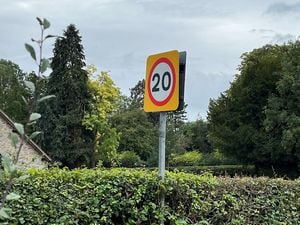Shropshire Sky At Night – December
December will fly by with the winter solstice on December 22, when we celebrate the longest hours of darkness or Yuletide, which, to some, indicates the rebirth of the sun and is believed to hold a powerful energy for regeneration, renewal and self-reflection, with the moon centre stage.

The full moon this month is referred to as the "Cold" or "Long Night" moon, and will follow its high trajectory across the sky on the 12th.
With so many stories, myths and legends associated with this period of winter festivals, there is something in the night sky for everyone.
The Christmas Star features in many such stories, but there is very little astronomical evidence to support the many theories of its existence, which includes being a possible supernova, a bright comet or planetary conjunction.
However with the constellation of Orion firmly planted high in the south eastern sky we can use its distinctive shape to identify a number of glorious sights.
On a clear night you will be able to identify a fuzzy patch just below his sword which is a rich stellar nursery giving birth to new stars. Follow the line of Orion's belt to the east and you will come across the bright orange star Aldebaran, the eye of Taurus the bull. If you look carefully you will see a small "V" shaped group of blue stars know as the Hyades open cluster, 150 light years away.
Still further to the east you will reach the Pleiades, another open cluster, at three times the distance from earth, known as the Seven Sisters.
These can all be seen with the naked eye but a pair of basic binoculars will provide you with awe inspiring views. If you have a dark sky and can find Cassiopeia the Queen, which is easy, because the constellation is overhead and has a distinctive M or W shape, then be sure to look for Perseus.
Scanning between them with your binoculars, will reveal the Double Cluster, a breathtaking pair of clusters, each containing supergiant suns.
Although the giant planets Jupiter and Saturn are dipping below the horizon and out of view, Venus, the Roman goddess of love and beauty, makes a spectacular return to the early evening sky.
For those who like spotting "shooting stars," officially referred to as meteors, mid evening on the 14th might prove beneficial, although a bright moon might be a bit of a hindrance.
Either way wrap up warm and be inspired by the wondrous sights, or just spend your time exploring the stories and myths in front of a blazing fire.
The Shropshire Astronomical Society, which meets monthly on the second Saturday at Little Ness Village Hall and on the third Saturday at Rodington Village Hall (December 7 for this month as even stargazers have to do some shopping), hosts a wide range of observing events, and always welcomes experienced or novice stargazers.
For further information visit www.shrophire-astro.uk
Steve Szwajkun, Shropshire Astronomical Society





